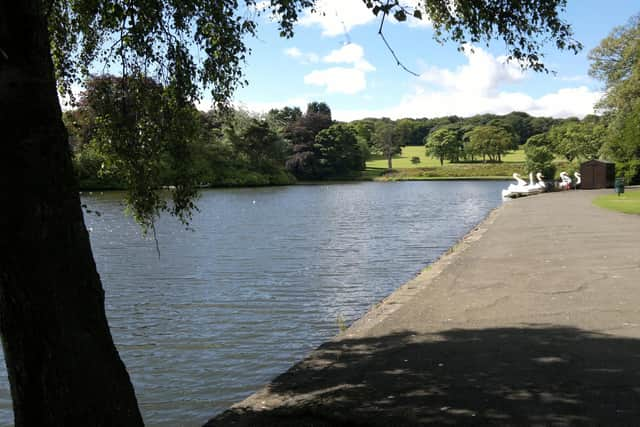Health warning over blue-green algae blooms at three Fife beauty spots
and live on Freeview channel 276
The suspected blooms have been noted at Beveridge Park in Kirkcaldy, Lochore Meadows, and Clatto Reservoir by Cupar.
The algae pose risks to public and animal health when they form blooms and scums in freshwater in warm summer months with people who are exposed to the algae’s toxins experiencing skin rashes and more severe symptoms if swallowed.
Advertisement
Hide AdAdvertisement
Hide AdDogs are also at risk if they drink the water, or lick their coats after swimming, exposure may be fatal or lead to severe symptoms requiring very rapid vet treatment.


What is blue-green algae?
Blue-green algae are minute organisms which occur naturally in lochs, ponds, reservoirs, rivers and in the sea which tend to clump together to form large blooms or scums.
It commonly occurs during periods of prolonged hot weather in waters which have been polluted by agricultural, domestic or industrial discharges.
In still waters the algae can multiply during the summer months to such an extent that they discolour the water which then appears green, blue-green or greenish brown.
Advertisement
Hide AdAdvertisement
Hide AdSometimes a scum may form on the surface, but is most commonly found at the water’s edge or shoreline.
How does blue-green algae affect humans and animals?
The toxins can cause death to animals either through drinking contaminated water or swallowing quantities of the scum.
Dogs have died after going into the water at the shores of affected lochs.
People who have come into contact, swam through algal scum, or swallowed it have suffered from skin rashes, eye irritation, vomiting, diarrhoea and pains in muscles and joints.
Advertisement
Hide AdAdvertisement
Hide AdThere have been no reports of long-term illness or death in human beings, however, illnesses were sometimes severe.
What should I do about blue-green algae?
Avoid all contact with affected or suspect water and ensure that children and pets are kept away.
Farmers should ensure that their animals do not have access to contaminated water – this may require fencing around the suspect waters. If any member of the public find areas of water affected with blue-green algae they should inform Economy, Planning & Employability Services on 03451 55 00 22.
Thank you for reading this article on our free-to-read website. We're more reliant on your support than ever as the shift in consumer habits brought about by coronavirus impacts our advertisers.
Please consider purchasing a subscription to our print newspaper to help fund our trusted, fact-checked journalism.
Comment Guidelines
National World encourages reader discussion on our stories. User feedback, insights and back-and-forth exchanges add a rich layer of context to reporting. Please review our Community Guidelines before commenting.